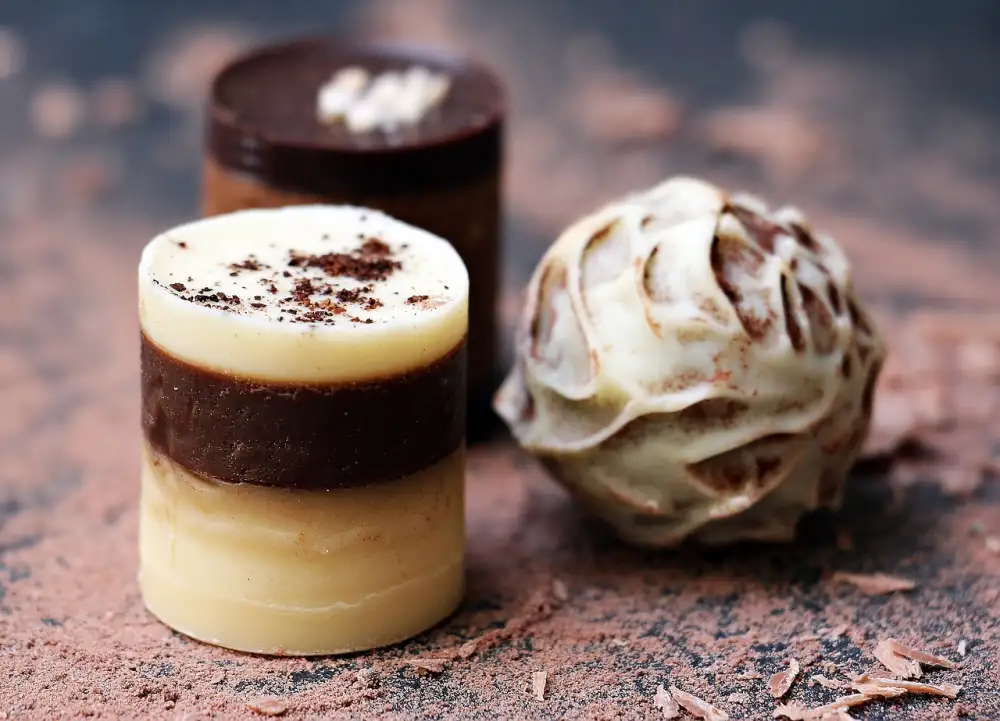Unveiling the Enigma: Discover the Allure of Truffles - The Gourmet Ingredient Explained

Truffles, the elusive and highly-prized gourmet ingredient, have captivated the palates of food enthusiasts for centuries. These mysterious fungi possess a unique aroma and flavor that can elevate any dish to new heights of culinary excellence. Whether shaved over pasta, infused into oils, or used as a decadent garnish, truffles have an unparalleled allure that sets them apart from any other ingredient. Join us on a journey as we unravel the enigma behind truffles and explore the artistry they bring to the world of gastronomy.
Definition and Origin of Truffles
Truffles, often referred to as the "diamonds of the kitchen," are a highly prized gourmet ingredient that has captivated food enthusiasts for centuries. But what exactly are truffles? Truffles are a type of edible fungi that grow underground in symbiotic association with the roots of certain trees, particularly oak and hazelnut trees. They have a unique and intense aroma that is often described as earthy, musky, and even slightly garlicky.
Originating from various regions around the world, truffles have been enjoyed since ancient times. The most famous and sought-after varieties come from Europe, particularly France and Italy. The Perigord black truffle from France and the Alba white truffle from Italy are considered some of the finest and most expensive truffles in the world.
Truffles thrive in specific climatic conditions, such as mild winters and hot summers, which contribute to their distinct flavor profile. These elusive delicacies can be found growing underground at depths ranging from a few centimeters to several meters. Their growth is influenced by factors like soil composition, temperature, moisture levels, and the presence of certain tree species.
The mysterious nature of truffle growth adds to their allure. Unlike other mushrooms that can be easily cultivated, truffles have proven to be quite challenging to reproduce under controlled conditions. This has led to their scarcity and high market value.
Despite their humble appearance, truffles have long been considered a luxury ingredient in gastronomy. Their unique flavor profile adds depth and complexity to dishes ranging from simple pastas to elaborate gourmet creations. Chefs around the world use truffles sparingly but strategically to enhance the overall taste experience.
Intrigued by their origin and distinctive qualities? Let's now delve into exploring the different types of truffles that grace our culinary world.
Types of Truffles
Truffles come in various types, each with its own unique flavor and aroma. The most prized and expensive truffle is the White Truffle (Tuber magnatum), found mainly in Italy. Its pungent, earthy scent and delicate taste make it a favorite among gourmet chefs.
Another popular variety is the Black Truffle (Tuber melanosporum), also known as the Perigord truffle. It has a strong, musky aroma and a rich, nutty flavor that pairs well with savory dishes.
Burgundy truffles (Tuber aestivum) are less expensive but still highly regarded. They have a milder aroma and taste, making them versatile for use in a wide range of recipes.
Other notable types include the Summer Truffle (Tuber aestivum), which has a mild flavor and is often used as a more affordable alternative to black truffles, and the Alba Truffle (Tuber magnatum pico), which is similar to white truffles but found primarily in the Piedmont region of Italy.
Each type of truffle adds its own unique touch to dishes, elevating them to new heights of culinary excellence.
Culinary Uses of Truffles
Truffles are highly prized for their unique and intense flavor, making them a favorite ingredient among gourmet chefs. These exquisite fungi are often used sparingly to enhance the taste of various dishes. Grated or shaved truffles can be added to pasta, risotto, scrambled eggs, and even salads to elevate their flavors. Truffle oil is another popular way to infuse dishes with the distinct aroma and taste of truffles. From simple dishes to extravagant creations, truffles add a touch of luxury and sophistication to any culinary masterpiece.
Truffle Hunting and Harvesting
Truffle hunting is an ancient practice that adds to the allure of these gourmet ingredients. It involves the use of trained dogs or pigs to sniff out the hidden truffles in the wild. Truffle hunters venture into forests, particularly oak and hazelnut tree groves, where truffles are known to grow.
The process begins with the hunter observing the behavior of their canine companion as they search for truffle-scented areas. Once a potential spot is identified, the hunter carefully digs around the area using a small tool called a truffle spade. This delicate process ensures that the truffle is not damaged during extraction.
Timing is crucial when harvesting truffles. They must be picked at just the right moment of maturity to ensure optimal flavor and aroma. Truffles are typically harvested during autumn and winter months when they have fully developed.
Truffle hunting is not without its challenges. The secretive nature of truffles makes them difficult to locate, and their underground growth means that hunters must rely on their keen senses and intuition. Furthermore, competition among hunters can be fierce as everyone seeks to find these prized delicacies.
Despite these challenges, truffle hunting remains an exciting and rewarding pursuit for those passionate about gastronomy. It allows us to connect with nature and experience firsthand the magic of unearthing these elusive treasures from beneath the earth's surface.
Truffle Cultivation
Cultivating truffles is a complex and time-consuming process that requires patience and expertise. Traditionally, truffles were only found in the wild, making them rare and expensive. However, with advancements in technology and scientific research, it is now possible to cultivate truffles.
Truffle cultivation involves creating an environment that mimics the natural conditions required for truffle growth. This includes selecting the right soil type, pH levels, and providing proper irrigation. Truffle spores are then introduced into the soil, usually by inoculating tree roots with mycelium-infused soil.
The most commonly cultivated truffle species are black truffles (Tuber melanosporum) and white truffles (Tuber magnatum). These varieties require specific host trees such as oak or hazelnut to thrive.
Once planted, it can take several years for the first truffles to appear. The process requires careful monitoring of soil conditions and regular maintenance of the trees. Truffle growers often employ trained dogs or pigs to help locate mature truffles underground.
Although cultivating truffles can be challenging, it offers a sustainable alternative to wild harvesting. It also allows for greater control over quality and quantity, making these luxurious delicacies more accessible to food enthusiasts around the world.
Truffle cultivation has gained popularity in regions like France, Italy, Spain, and Australia where favorable climatic conditions exist. However, it is still considered an art form that requires skill and knowledge passed down through generations.
Overall, truffle cultivation is a fascinating process that combines science with nature's mystery. It not only ensures a steady supply of these prized ingredients but also contributes to the preservation of truffle ecosystems in their natural habitats.
Health Benefits of Truffles
Truffles not only tantalize our taste buds but also offer numerous health benefits. These exquisite fungi are packed with essential nutrients, making them a valuable addition to any diet. Truffles are low in calories and fat, making them an excellent choice for weight management. They are also rich in vitamins, minerals, and antioxidants that boost the immune system and promote overall well-being. Additionally, truffles contain compounds that have anti-inflammatory properties and may help reduce the risk of chronic diseases. Incorporating truffles into your meals can enhance both the flavor and nutritional value of your dishes.
Tips for Buying and Storing Truffles
1. Buy fresh truffles: Look for truffles that are firm, with a strong aroma. Avoid truffles that are soft or have a moldy smell.
2. Consider the season: Truffles are seasonal, so it's important to buy them when they are in season to ensure the best quality and flavor.
3. Trust your senses: When buying truffles, use your senses to judge their quality. They should have a strong, earthy aroma and a firm texture.
4. Store properly: Truffles should be stored in an airtight container in the refrigerator. Place them in a paper towel or rice to absorb any excess moisture.
5. Use quickly: Truffles are best consumed within a week of purchase, as their flavor diminishes over time. Plan your recipes accordingly to make the most of their unique taste.
6. Freeze for later use: If you can't use all your truffles right away, consider freezing them. Grate or slice the truffle before freezing and store in an airtight container.
Remember, truffles are delicate and perishable, so it's important to handle and store them with care to preserve their exquisite flavor and aroma.
Truffle Recipes to Try
Truffles are a prized gourmet ingredient that can elevate any dish to new heights. If you're lucky enough to get your hands on these culinary gems, here are some truffle recipes you must try:
1. Truffle Risotto: Indulge in the creamy goodness of a classic risotto infused with the earthy aroma of truffles. The combination of rich flavors will leave you craving for more.
2. Truffle Pasta: Elevate your pasta game by adding shaved truffles to a simple butter and Parmesan sauce. The delicate flavors of the truffles will take your taste buds on a luxurious journey.
3. Truffle Scrambled Eggs: Start your day off right with a decadent breakfast of scrambled eggs infused with the irresistible scent and flavor of truffles. It's the perfect way to add a touch of luxury to your morning routine.
4. Truffle Pizza: Take your pizza night to another level by topping it with slices of fresh truffles. The combination of the crispy crust, gooey cheese, and aromatic truffles is simply divine.
5. Truffle Butter: Whip up a batch of homemade truffle butter and slather it on warm bread or use it to enhance the flavor of grilled meats and vegetables. It's an easy way to add a touch of luxury to any meal.
These recipes showcase the versatility and allure of truffles, making them a must-try for any food lover looking to experience the magic that these extraordinary ingredients bring to the table.
In conclusion, the allure of truffles lies in their unique and captivating flavor. These elusive gourmet ingredients have been prized for centuries for their intense aroma and earthy taste. Whether it's the delicate white truffle or the robust black truffle, these culinary gems add a touch of luxury to any dish. From savory sauces to creamy risottos, truffles elevate ordinary recipes into extraordinary culinary experiences. So next time you want to indulge in a truly decadent dining experience, don't forget to include these enchanting delicacies on your menu.
Published: 19. 11. 2023
Category: Food



